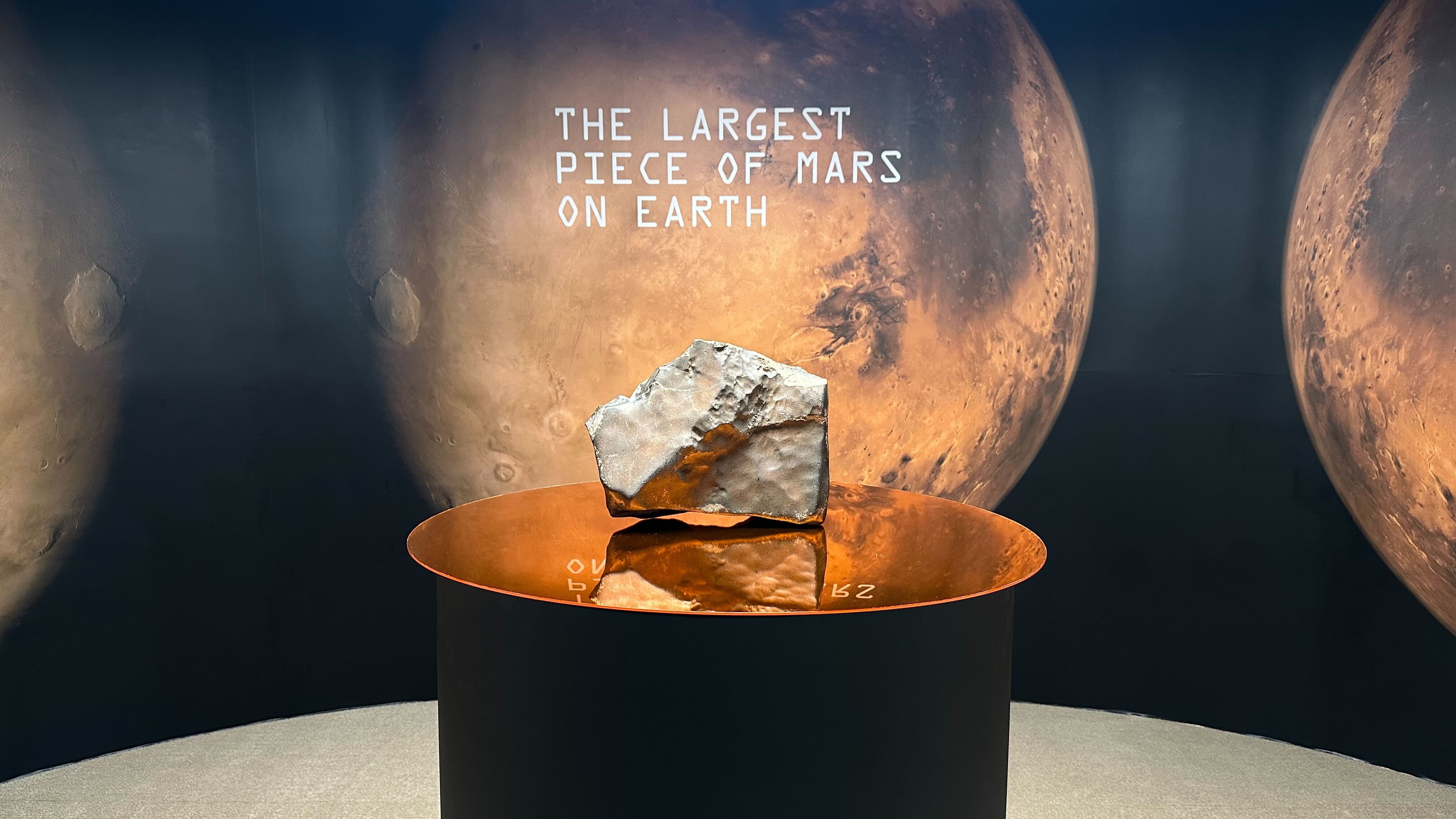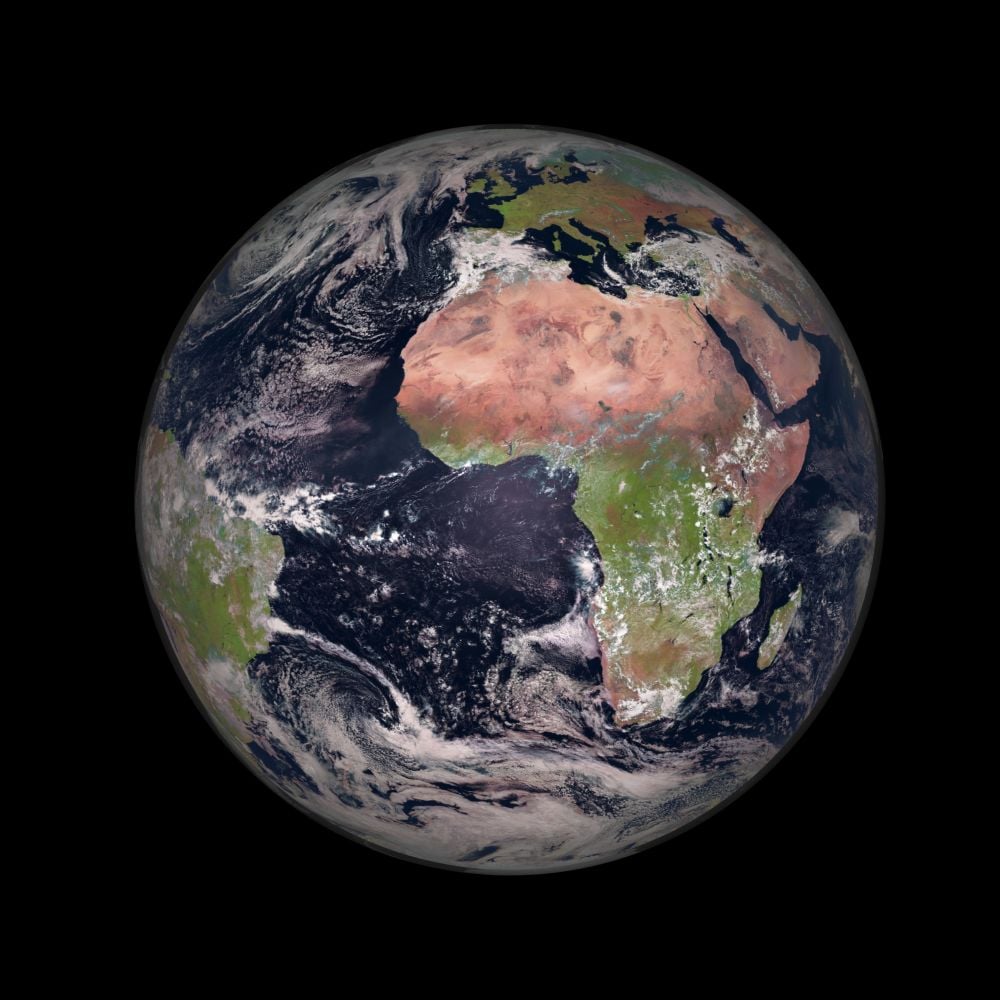NASA has discovered a mysterious ‘super-Earth’ planet that appears to flash a repeated signal from 154 light-years away.
The planet, named TOI-1846 b, is almost twice the size of Earth and four times as massive.
It orbits a small, cool red dwarf star every four days and causes a strange, repeated dip in the star’s light, a signal that first caught scientists’ attention when NASA’s TESS space telescope observed the dimming pattern in March of each year.
Now confirmed by a team of scientists using both space and ground-based telescopes, TOI-1846 b falls into the so-called ‘radius gap,’ a rare category between small, rocky planets like Earth and larger, gas-rich planets like Neptune.
Despite an estimated surface temperature of 600°F, researchers say the planet may still hold water.
It’s believed to have a solid rocky core, a dense ice layer, and potentially even a shallow ocean or thin atmosphere.
Abderahmane Soubkiou, lead researcher at Oukaimeden Observatory in Morocco, said: ‘We have validated TOI-1846 b using TESS and multicolor ground-based photometric data, high-resolution imaging, and spectroscopic observations.’
Their measurements also showed that the planet circles its star in just under four days, staying on an orbit that is much closer to its sun than Mercury in our Solar System.

NASA has discovered a mysterious ‘super-Earth’ planet that appears to flash a repeated signal from 154 light-years away. The planet, named TOI-1846 b, is almost twice the size of Earth and four times as massive (STOCK)
The host star is a red dwarf, about 40 percent the size and mass of our sun, glowing at around 6,000°F.
Because red dwarfs are smaller and dimmer, planets must orbit close to receive warmth, which also makes it easier for telescopes to detect them as they pass in front of the star.
TESS, which launched in 2018, has flagged more than 7,600 such transit events and confirmed over 630 planets so far.
Its four high-sensitivity cameras scan the sky every 30 minutes, making it ideal for spotting shallow light dips like those from TOI-1846 b.
The newly discovered planet is also likely tidally locked, meaning one side always faces its star while the other remains in darkness.
This temperature contrast could allow water to be trapped in cooler regions, depending on how heat moves through the atmosphere.
NASA scientists hope the James Webb Space Telescope will soon target TOI-1846 b to study its atmosphere using infrared light.
If conditions are right, Webb could detect signs of water vapor, methane, carbon dioxide, or other gases.
Ground-based telescopes like the Gemini Observatory in Hawaii are also contributing, using a precision instrument called MAROON-X to measure the tiny wobble in the star caused by the planet’s gravitational pull, helping confirm its mass and look for hidden neighbors.
Researchers believe TOI-1846 b might not be alone. Subtle shifts in its orbit suggest another planet could be lurking in the same system, potentially one orbiting farther out in a cooler, more habitable zone.
The discovery comes alongside another recent find: TOI-715 b, a second super-Earth located 137 light-years away, also orbiting a red dwarf.
Both planets help fill key gaps in astronomers’ understanding of how some small planets lose their atmospheres over time while others manage to keep them.
As red dwarfs make up about 75 percent of all stars in the Milky Way, studying planets like TOI-1846 b could reveal how many more potentially habitable worlds might be hiding in our galactic backyard.
Source link

